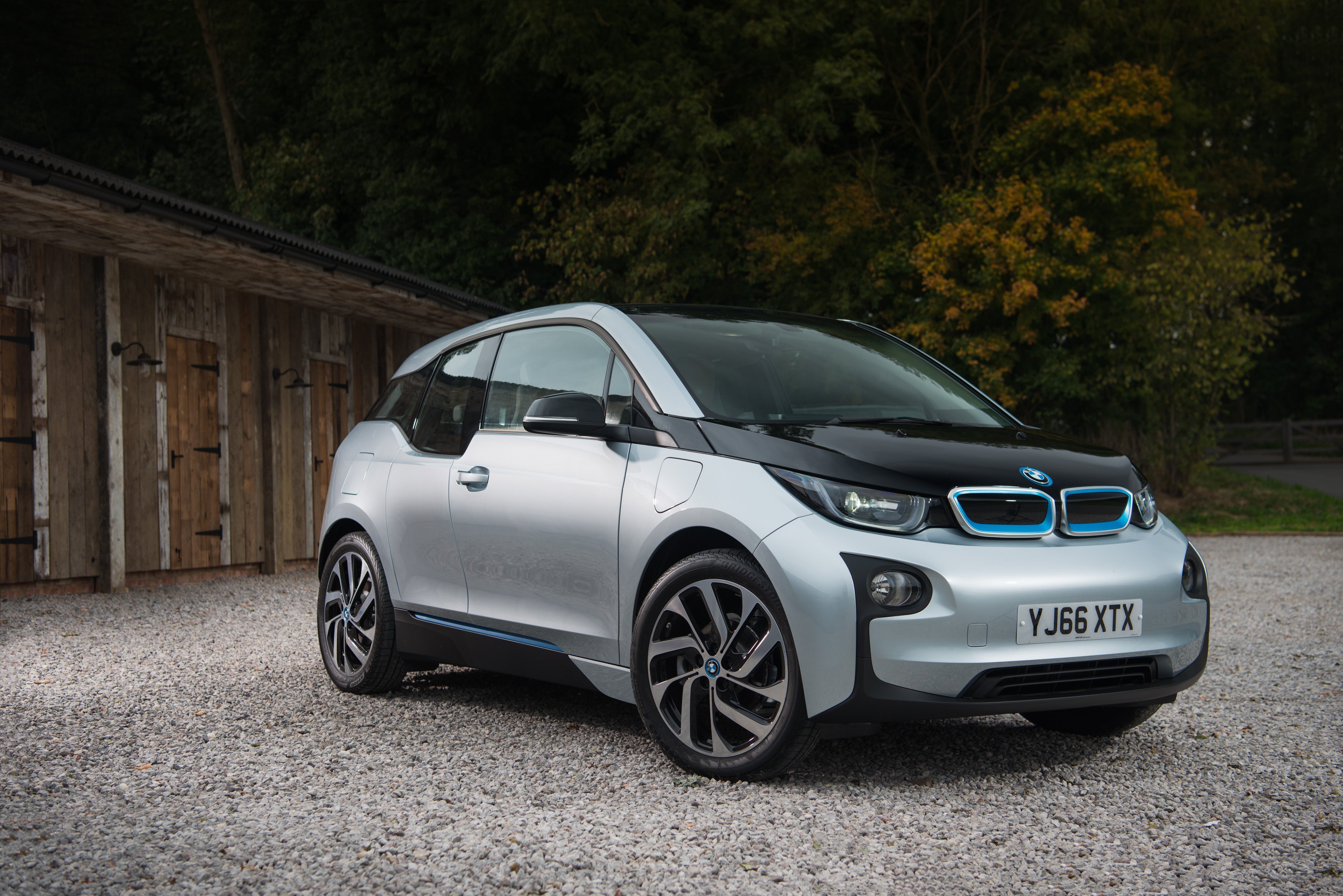BMW i3 Review 2024
Written by Andrew Brady
Quick overview
Pros
- A blast to drive but still capable of 200 miles on a charge (just not at the same time)
- Eye-catching design is thoroughly modern and clever with it
- Still feels like a BMW through and through
Cons
- Expensive compared to EVs of a similar size and age
- Range might be too limited for some buyers
- Standard equipment is short on active safety systems
Overall verdict on the BMW i3
"If any car could convince you that EVs are a good idea, the BMW i3 is it. It has sufficient charm and appeal to make you want one regardless of the power source, yet it delivers all the big EV plus points, too."
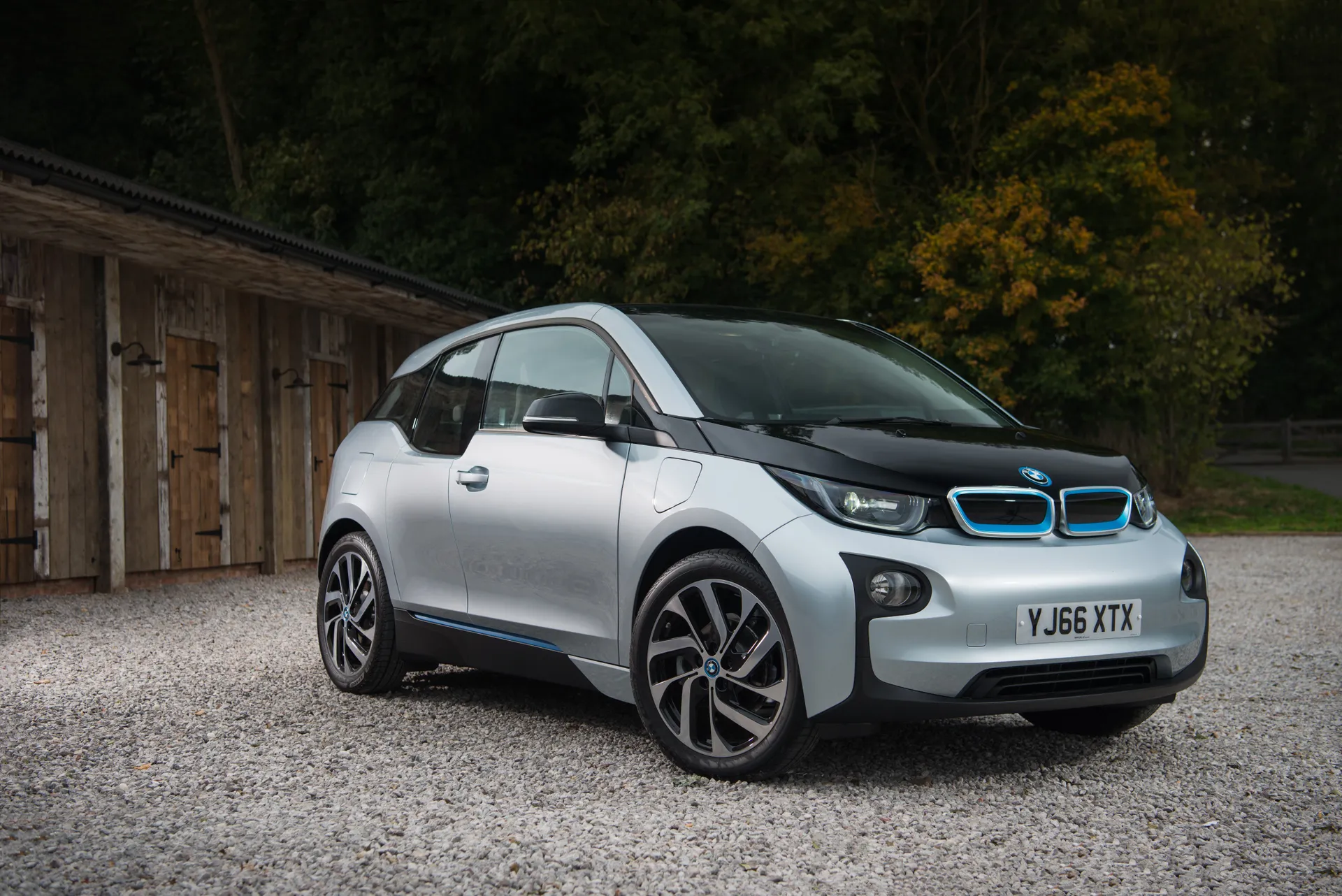
Before we dive into our BMW i3 review, you really need to appreciate the electric car landscape before it arrived. While pure electric cars have become fashionable, and the idea that they are only suitable for eco-crazies or nerdy engineers is long-gone, it was quite a different story back in 2013. If you were brave enough to take the plunge on an EV, you had three choices: the Nissan Leaf, the Renault Zoe and the Tesla Model S.
BMW strode confidently into the electric car arena with a grand plan. It introduced two electric cars, not just one, and built them out of lightweight composite materials, whilst also ensuring they included lots of recycled materials. Plus, they ensured that they were as much fun to drive as a regular BMW. An impossible dream? Well, when the BMW i3 arrived alongside its big sister, the BMW i8 (which was technically a hybrid car), the world sat up and took notice. The i3 and i8 flew BMW's EV flag for many years since, and it was only in 2021 that the range of BMW electric cars grew significantly.
At launch, the BMW i3 came in two versions, each with a 60Ah battery and an electric motor, offering 170PS and 250Nm of torque. The pure EV version had a range of between 80 and 100 miles on a full charge, while a range-extender version (called REx) included a small 647cc engine that could only be used to recharge the batteries, extending the potential range to 186 miles.
In 2016 the battery capacity was increased to 94Ah, increasing the range to 195 miles and 276 miles, respectively, while in 2017 BMW introduced the i3S model, with a slight increase in performance, revised suspension and styling upgrades.
Most recently, all i3 models received a bigger battery in 2018 with a capacity of 120Ah. Range was increased to 223 miles for the standard i3, while the REx model was discontinued as it was no longer felt necessary.
With just two models and no trim levels to choose from, the BMW i3 is a car that requires little deliberation. The exterior design is as modern as they come, with short overhangs, body panels that don’t appear to meet each other and black plastic where you might expect a grille.
The same goes for the inside of the BMW i3, which is a lesson in minimalism and is decorated in a variety of earthy shades and materials, alongside the usual suite of display screens for infotainment and instruments.
The BMW i3 is a strict four-seater, but thanks to the way it is packaged, the amount of room on offer is impressive. Legroom is generous for front- and rear passengers, while headroom is good enough to sit taller adults even in the back seats. The boot is relatively small with 260 litres of space on offer, but this is to be expected from a car so short, and you still have the option to drop the rear seats if need be.
The driving experience is true BMW. It's one of those electric cars that releases its acceleration all at once rather than unfurling it gradually, and the way the BMW i3 can blast away from a standstill up to 30mph and beyond will change the mind of EV-sceptics very quickly. The rest is equally grown up, with light and accurate steering that makes it easy to nip along with traffic. It’s comfortable, too, and although the suspension is relatively stiff to make sure it handles well and doesn’t roll too much, only really bad bumps make it through to the cabin.
The BMW i3 is not a cheap electric car to buy. When it was new it started at more than £36,000 while the i3S was closer to £40k. It has held its value strongly, but you at least get a lot for your money and the car will continue to hold its value. Standard equipment levels are decent, while the BMW i3 is cheap to run and you also get a car that’s a pleasure to drive.
Looking for a used car for sale? We've got 100s of BMW Approved Used Cars for Sale for you to choose from, including a wide range of BMW i3s for sale.
Is the BMW i3 right for you?
If an EV is on your shopping list and you don’t need a massive boot or to carry five people, the BMW i3 is worth serious consideration. Enjoying the drive while running on electric power has never been so much fun.
If you can live with the price, the BMW i3 also makes a strong financial case for itself. Not only will it cost peanuts to keep topped up with electricity, it is one of the best-performing pure electric cars in terms of depreciation, and insurance costs should be modest, too.
It may cost a little more to buy than some of its rivals, but the BMW i3 has the edge on most of them in terms of its design, its image and how it drives.
What other cars are similar to the BMW i3?
In many ways the i3 is something of a loner in the EV class. Similarly-sized EVs are significantly cheaper while EVs for similar money are bigger inside and out. Crucially, none of its premium rivals offered an EV in this class at the time.
City cars like the Volkswagen e-Up can carry four people in similar comfort, with a good quality cabin and a lower purchase price, but the e-Up can’t match the BMW i3’s range or its impressive performance and handling.
The Nissan Leaf was closer to the i3 in terms of price, but its bigger footprint means seating for five and a larger boot, although it is less fun to drive than the BMW. Go for the top spec version and you can have over 200 miles of range, too.
Comfort and design: BMW i3 interior
"The inside of the BMW i3 is probably unlike any other car you’ve been in, partly because its dimensions are relatively unusual, but also due to the layout."
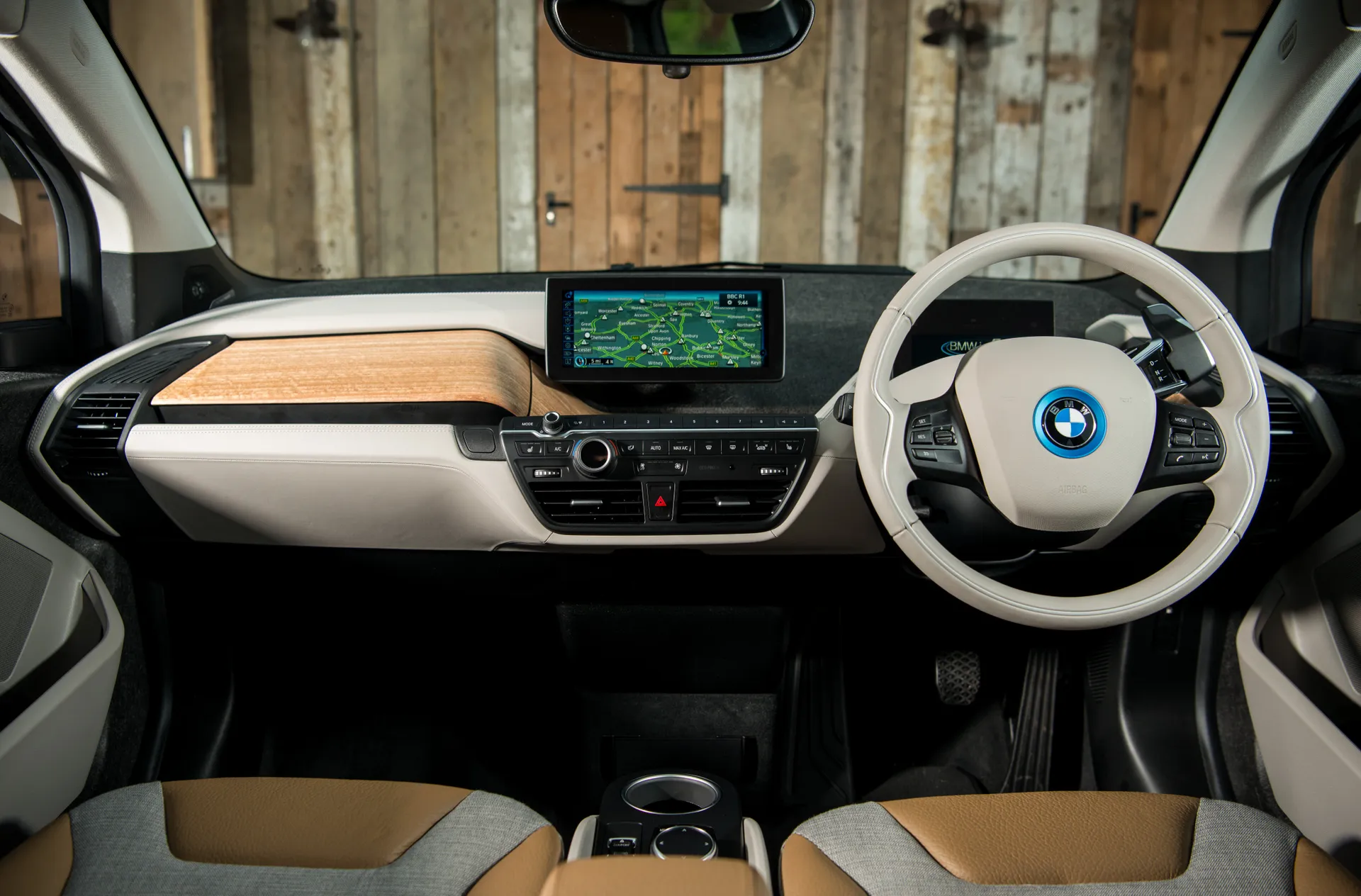
For starters the BMW i3 has ‘suicide’ doors. You get a normal pair of front doors, but the smaller rear doors pivot from the rear. Because the BMW i3 is built largely from CFRP (carbon fibre reinforced plastic), a lightweight but ultra-strong material, it doesn’t need a central pillar (the one you normally get between front and rear doors) to make it strong. So hopping into the rear is a cinch as you climb through a massive opening when both doors are open.
Sit up front, and you are greeted with a vast front windscreen that sits way out in front of you, while the dashboard is very minimalist. All you see is the steering wheel, the twin screens for infotainment and the instrument display. The same goes for the floor: with no conventional engine and gearbox there’s no need for a transmission tunnel, so the BMW i3 gives you a virtually flat floor.
The seats may look relatively thin but they offer good levels of support, while the driving position is excellent. It might feel a little odd at first with the windscreen so far away, but in truth the view out is excellent and it’s very easy to get comfortable.
Quality and finish
You expect a certain degree of quality from a BMW and the i3 delivers, although it takes a slightly different approach from other BMWs. Rather than using swathes of expensive-feeling soft touch plastic and leather, the i3 cabin is trimmed with interestingly textured materials that you might not immediately recognise (most are the CFRP that the car's structure is made from), but which still feel expensive, sturdy and advanced. The stripped-back approach gives a feeling of space and airiness, rather than making it feel like you’ve been short-changed. It's all really effective.
The BMW i3 doesn’t have trim levels as such either. Instead, BMW offered three ‘interior worlds’ (yes we’ve reached peak hipster levels) called Loft, Lodge and Suite, each of which comes with its own colour scheme and material choices with different types of wood and leather.
Infotainment: Touchscreen, USB, nav and stereo in the BMW i3
Early examples of the i3 were fitted with BMW’s lower specification navigation - pretty much an essential when running an electric car so you can always find somewhere to charge. The upgraded 'Professional' system was standard on newer models, which got you a larger 10.25-inch screen and features like real-time traffic and charging point information.
The standard audio system does include Apple CarPlay as standard, but there is no provision for Android Auto - sorry Samsung, Google Pixel, Sony phone owners (and all the others). However, you can still connect your Android phone via Bluetooth and use the USB port to play media. DAB is also standard, but there is no CD player should you want to go old-school.
The systems work well and are easy to use, with the option to use voice or touch control as well as BMW’s iDrive controller, which has been honed to perfection over the years.
Space and practicality: BMW i3 boot space
The BMW i3 is similar in size to a small hatchback, at least in terms of length, but compared to more conventional cars of a similar exterior size, it has both positives and negatives.
The BMW i3 is a fraction under four metres in length at 3999m, and 1775mm wide, making it small enough to fit into the teeniest of parking spaces. This is helped by the BMW i3's very small turning circle. Better yet, if you squeeze into a small space in a car park, the suicide doors make it easy to actually get out. The lack of that middle pillar also means getting your little (or not so little) ones into their car seats is much easier.
Inside, you’ll find the amount of room a surprise. The BMW i3 definitely makes the most of its height, with loads of headroom, enough to insert actual tall adults in the back should you wish to do so. Legroom is decent rather than excellent in the back, but up front you get both the height and the length, ensuring comfort for even the tallest human. The sense of space is enhanced by the flat and uncluttered floor.
The downside of the minimalist cabin in the BMW i3 is that there isn’t a whacking great centre console in which to hide all your stuff. Between the seats there is a slim storage area underneath the armrest with a couple of cupholders, but you need to make use of the glovebox and door bins if you keep a lot of odds and ends in your BMW i3.
The boot has a relatively high floor thanks to the electrickery underneath, but the space itself is a good, square shape. With the rear seats in place, the BMW i3 gives you 260 litres of boot space to play with - not as much as some rivals but a reasonable amount - and you still have the option to drop one or both of the rear seats to open up a maximum of 1100 litres. Beware that to save space the BMW i3 has no spare wheel, only an emergency inflation system.
Handling and ride quality: What's the BMW i3 like to drive?
"BMWs have a reputation for being good to drive, but this isn’t your typical BMW: tall, relatively short and running on electric energy rather than a powerful petrol engine. However, the brand has managed to give the i3 the feel of a BMW."
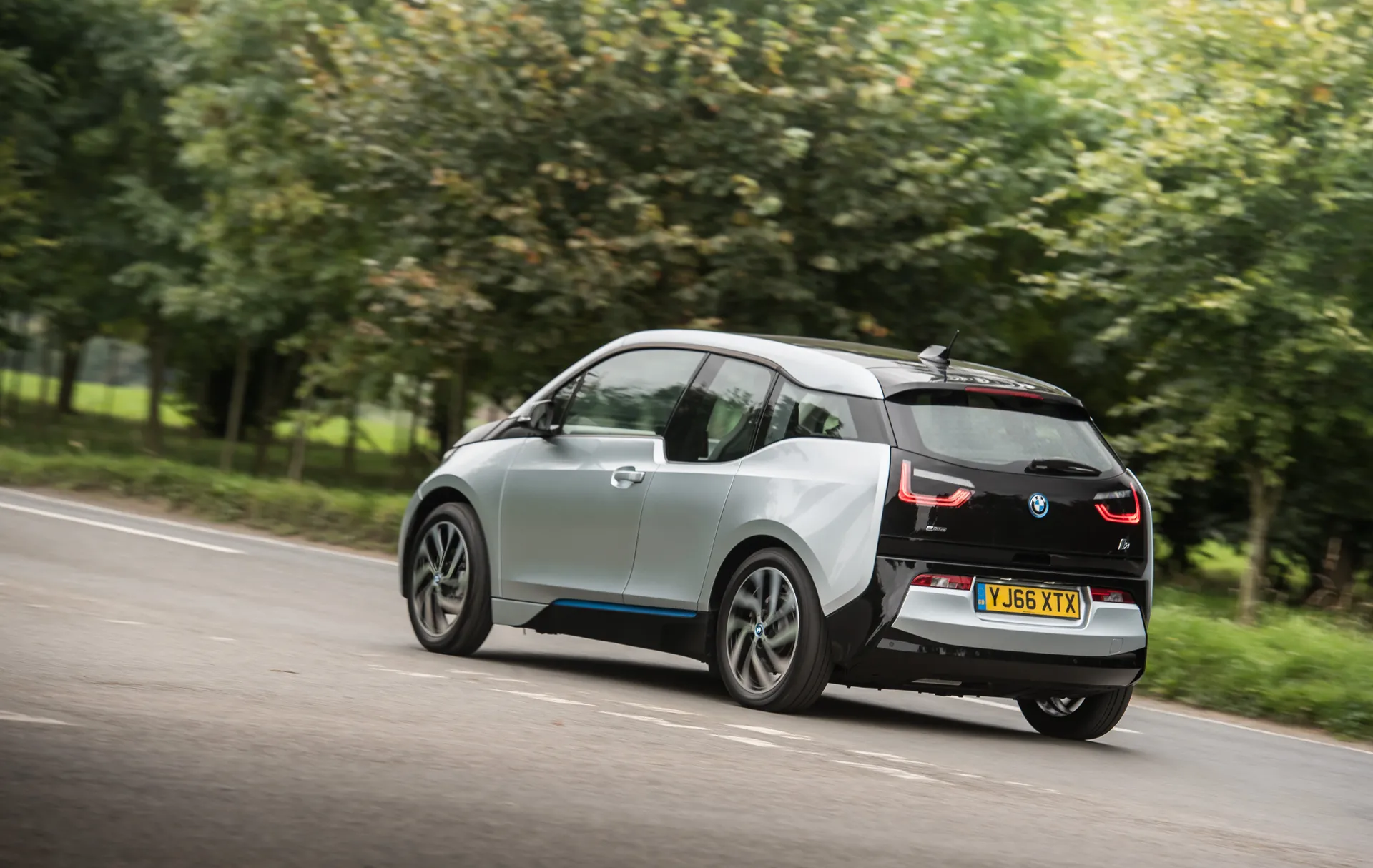
While the BMW i3’s height might have you thinking that its body would roll around at the first sign of a corner, it remains impressively stable, dispelling any concerns you might have that it is too tall for its own good. The steering is a delight, being light enough to make short work of urban cut and thrust, but with enough weight and feel that you have a sense of what the front wheels are actually up to.
This balance and poise is partly achieved thanks to the relatively stiff suspension, the trade-off being a firm ride. Most of the time the BMW i3 rides pretty well, ignoring bumps and dealing well with road imperfections, but bigger bumps do result in more of a thump. However, unless you have a glass spine, the i3 is comfortable enough.
Better yet, should you wish to have some fun while using no petrol, the BMW i3 is happy to oblige. Spend enough time behind the wheel and you’ll find it hard to resist its quick steering and tight body control. When pushed a little harder the BMW i3 is as good to steer as a performance car, but ultimately, the skinny tyres mean it has similar grip to a regular hatchback. It’s great fun nonetheless.
Parking the BMW i3 is a breeze, and although it only gets rear parking sensors as standard, it is easy to judge the extremities and the sharp turning circle is a big help. There is also a Park Assist package that adds front sensors and a camera, so it’s worth looking for cars with this fitted.
What engines and gearboxes are available in the BMW i3?
In the beginning, the BMW i3 was offered with a 60Ah battery, which was subsequently upgraded to 94Ah in 2016 and then 120Ah in 2018. Essentially, the bigger the number, the longer the range.
A range extender version called REx was also available from launch, adding a 647cc twin-cylinder petrol engine used solely to recharge the batteries. The wheels themselves were driven by the electric motor alone, so the power output of the REx was identical to the standard car's.
A further split came in 2017 with the introduction of the BMW i3S model. This has a little more power and torque to go with its more ‘aggressive’ design.
With 170PS on offer in the standard BMW i3 and 184PS in the i3S, this is a car with very perky performance. It gets away from the line super-quickly, and the feeling of acceleration is actually much stronger than you'd expect given the power output,. That's because the electric motor's maximum torque is available as soon is it starts spinning, so you don't have to wait for the revs to build like you do with a combustion engine. On-the-move acceleration isn't as strong as off-the-mark acceleration, but it's still strong enough. To save excessive drain on the battery the top speed is limited to just 93mph (99mph for the i3S).
The extra power and torque of the i3S is a nice bonus if your budget can stretch to it, but in terms of actual performance it's only a fraction faster than the standard car, so you needn't spend the extra.
Maximum range in the BMW i3
According the the NEDC testing regime of the time, the earliest 60Ah version of the BMW i3 could do about 80 to 100 miles on a full charge. In 2016, the 60Ah battery tech was replaced by the 94Ah system, and the range increased to 195 miles, again under the outdated NEDC system.
This was later replaced again in 2018 by the BMW i3 120Ah, boosting the car's NEDC figure up to 223 miles. WLTP figures were also available by this time, and the equivalent figure under the newer testing regime was roughly 190 miles. It is worth noting that the i3S has a slightly lower range by about 10 miles, version for version.
In the real world, you can expect to get 140 miles from the 120Ah model on a single charge if you drive sensibly, and maybe a little more if you are careful and use the EcoPro drive mode, which cuts back on air conditioning and limits the car’s top speed.
Refinement and noise levels
Like most electric cars, the BMW i3 is extremely quiet. At most you get a faint, distant whine when accelerating hard, but for the most part, you hear nothing from the powertrain.
What that does, however, is throw into contrast any noise coming from elsewhere that would normally be drowned out. So you notice a little wind noise at speed, and a faint thrum from the tyres, and these increase with speed, but never get to levels that become bothersome.
As you might expect, there is very little difference in noise level between the BMW i3 and i3S models. The i3S has slightly bigger wheels and tyres, which cause a tiny increase in road noise, but you could have these wheels and tyres fitted to a regular i3 optionally.
Safety equipment: How safe is the BMW i3?
The fact that the BMW i3 arrived in 2013 means it does not offer the level of safety that you expect from a present-day model. It was tested by EuroNCAP in 2013 and received a four-star overall rating: solid for the time, but less than some key rivals.
It scored highly for adult and child protection, but did less well in terms of pedestrian mitigation, partly hampered by the very short bonnet. It also scored lower marks in terms of safety assist systems fitted. Where the BMW i3 does well is in terms of the physical strength of the structure - carbon fibre reinforced plastic is very light and strong - and despite the short overhangs it has proven good crash performance.
As standard, the BMW i3 is fitted with front and side airbags, but a knee airbag is not fitted or optional. Isofix child seat mounting points are standard, along with passenger airbag deactivation.
Since it was first introduced, BMW added the optional Driving Assistant Plus package (£790 when new) which included Active Cruise Control, City Collision Mitigation, Forward Collision Warning and Pedestrian Detection.
Charging times: How much does it cost charge a BMW i3?
As standard the BMW i3 comes with a 5.0 metre 3-phase public rapid charging cable with a Type 2 connector, as well as a three-pin connector for charging at a domestic socket.
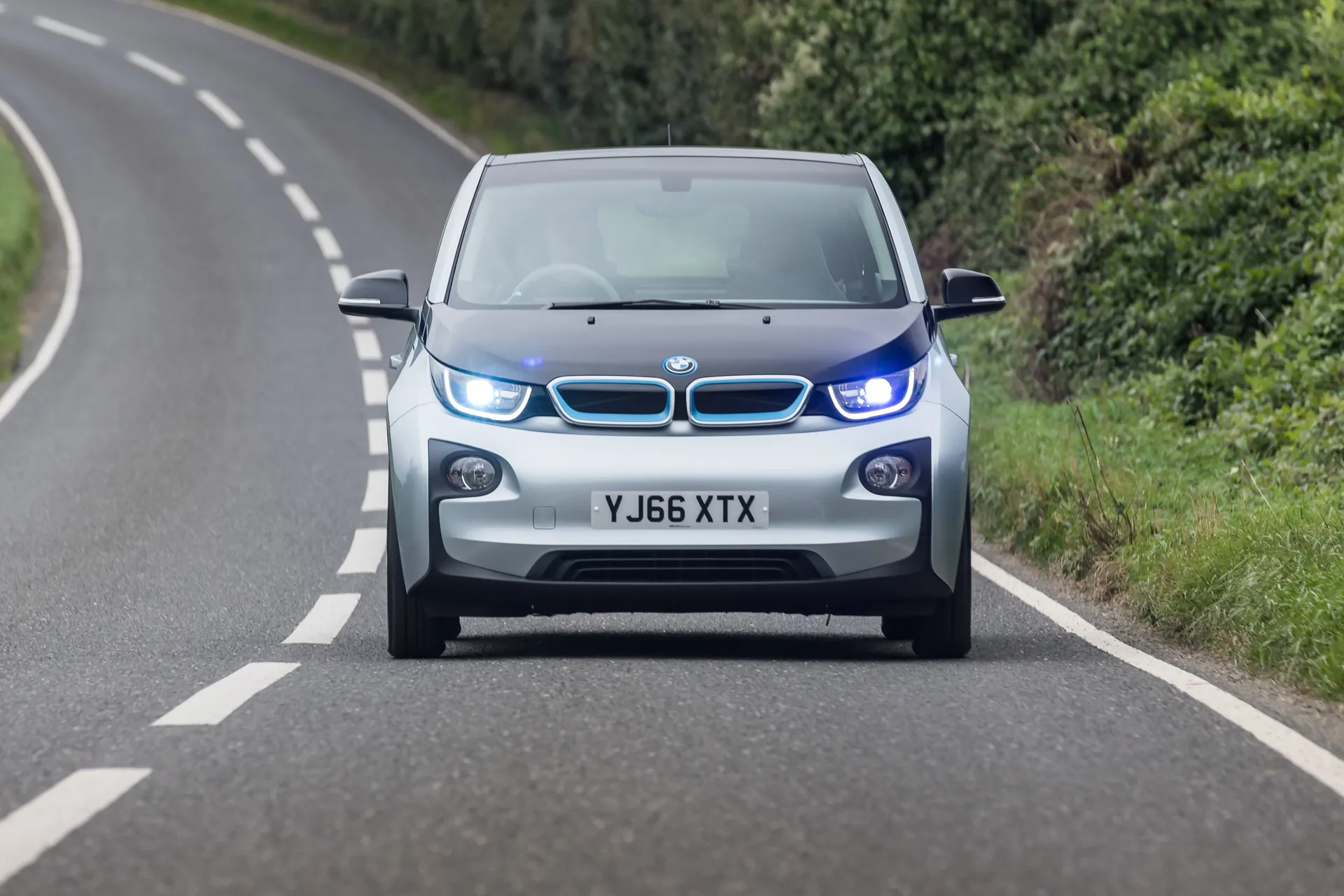
For the 120Ah version, BMW claims an 80 per cent charge from flat through a standard home three-pin socket will take 15 hours on the i3. With a home wallbox running at 11kW, this time is cut to around three hours, or more like six hours if running at the more common 7kW rate. Find a rapid charger running at 50kW, and the same charge is cut to 45 minutes.
A full charge at home will cost approximately £11 if charged at the current UK average for domestic electricity, which is about 28p per kWh. You can cut that in half by charging overnight on cheaper off-peak tariffs. A rapid charge at a public station will likely cost you more like £20.
How reliable is the BMW i3?
The BMW i3 has been available since 2013 and in that time, no common problems across the range have come to light. In fact, the i3 scored an impressive 9.86 out of 10 overall in the most recent HonestJohn.co.uk Satisfaction Index, and featured ninth on the list of the top ten most reliable models in the entire study. Meanwhile, BMW finished 12th on the list of 29 manufacturers for overall customer satisfaction.
Insurance groups and costs
Despite its performance and relatively high sticker price, most versions of the BMW i3 range fall between groups 28 and 29, which is right in the middle of the 50-group scale. That compares favourably with cars like the Nissan Leaf, so you can enjoy the premium badge without being penalised on the insurance.
The sportier i3S is in the higher group 29, so you will inevitably have to pay a little more, but the difference should be measured in tens of pounds rather than hundreds. Read our guide to the cheapest BMW models to insure for more info.
VED car tax: What is the annual road tax on a BMW i3?
Thanks to its zero-emissions status, the BMW i3 attracts no VED in the first year or subsequent years.
How much should you be paying for a used BMW i3?
"The BMW i3 has been around since 2013, so the value of older examples has had plenty of time to tumble, but newer examples will be a lot pricier."
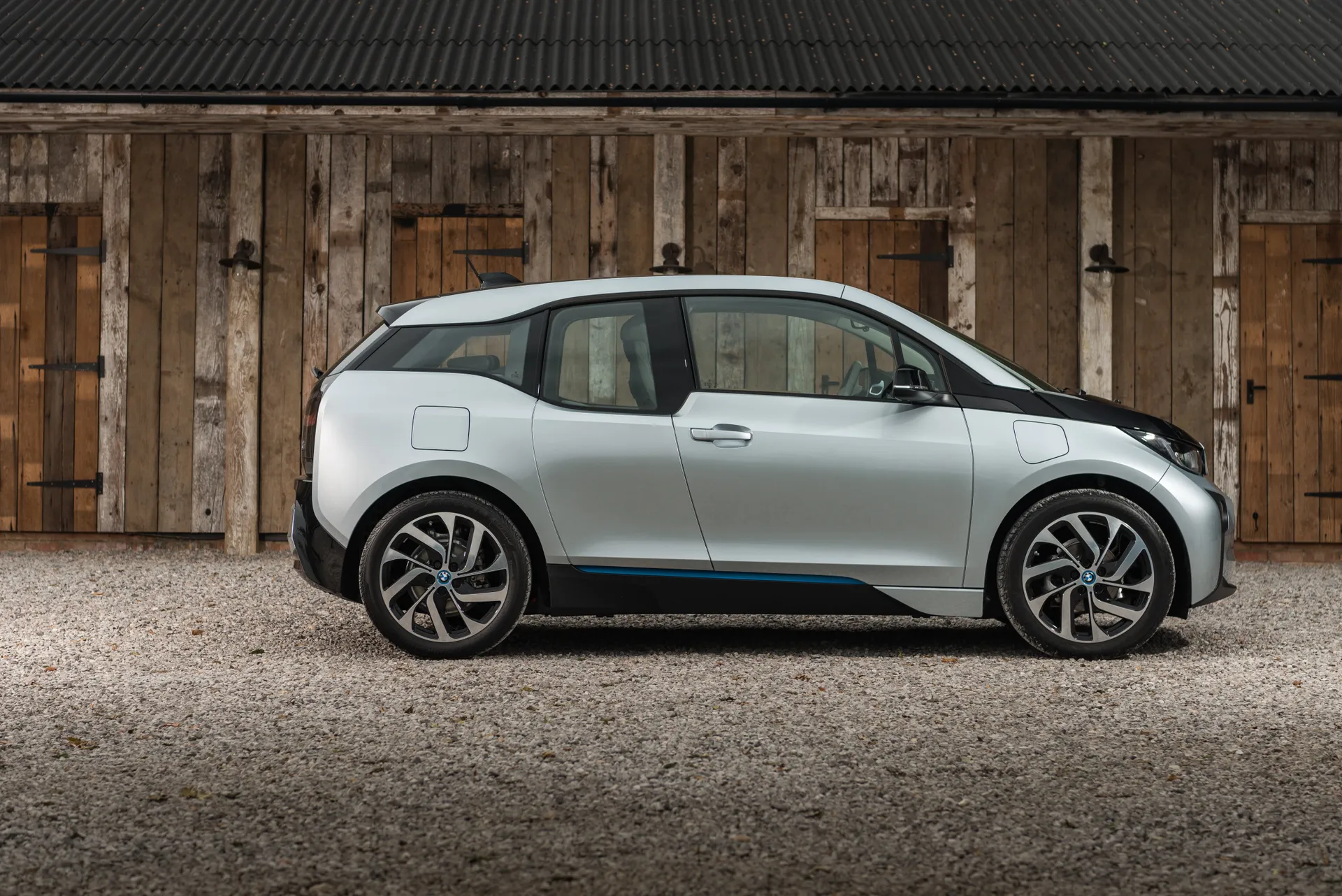
The desirability of the BMW badge - and the i3 itself, for that matter - has kept prices of pre-owned examples comparatively strong. which isn't good news for used car buyers. The fact that electric cars are famed for being comparatively expensive isn't good news, either, and neither is the news that the i3 was considerably more expensive than rivals when new to begin with.
However, the i3 has been around for so long that prices of older versions have had plenty of time to come down. The cheapest i3s in our listings clock in at around £10,000, and that's for a 94Ah range-extender from 2016 or 2017 with around 60,000 miles under its wheels.
Cars with the bigger 120Ah battery start from around £14,000, and should have roughly half the mileage. If you want an S, you'll be looking at around £16,000.
Do bear in mind, though, that if you're after a newer example, prices jump up steeply due to the car's desirability and high initial price. A 2022 car of a reasonable spec and mileage will set you back upwards of £20,000.
BMW has stopped making the i3 as a new car, so the used car market is your only option if you want one. And while we're not promising anything, we wouldn't be surprised if there came a point in the future when prices started to rise again, given that the i3 is such an interesting, significant, and important car.
Trim levels and standard equipment
The BMW i3 range is pretty simple with two models and no trim levels. The standard i3 is pretty well specified, getting 19-inch alloy wheels, Bluetooth and USB connectivity, nav with DAB and Apple CarPlay, heated front seats and rear parking sensors as standard.
Move up to the BMW i3S and you get an additional 14PS and 20Nm of torque from the electric motor, 20-inch alloy wheels, a Sport driving mode, gloss black exterior details and revised suspension, as well as some subtle i3S badging.
One thing to consider is the different ‘interior lounge’ options. The standard Atelier is relatively plain, where the other versions add leather and wood to good effect. On all models, the optional Plus package added different alloy wheels, online entertainment and the upgraded Harman Kardon audio system.
The Park Assist package added a reversing camera and front parking sensors, while the Driving Assistant Plus safety pack gave you Active Cruise, City Collision Mitigation, Forward Collision Warning and Traffic Jam Assist. All these pack are worth looking out for on any used example you might be considering.
Ask the heycar experts: common questions
Has the BMW i3 been discontinued
Is the BMW i3 fully electric?
How long does the battery in the BMW i3 last?
Get our latest advice, news and offers
Keep me updated by email with the latest advice, news and offers from heycar.
By submitting you agree to our privacy policy
